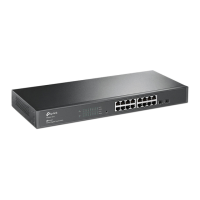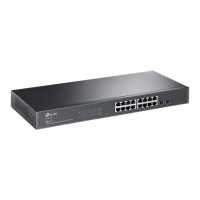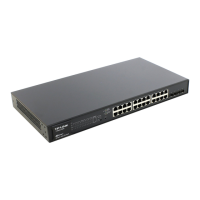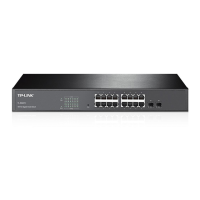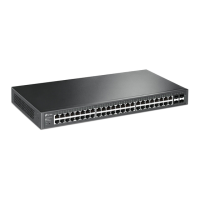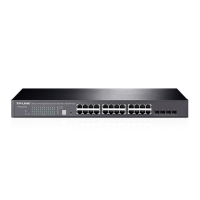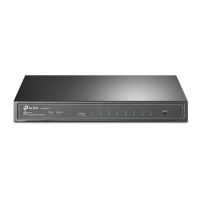191
Syntax
rule
rule-id
{ deny | permit } [[ smac
source-mac
] smask
source-mac-mask
]
[[ dmac
destination-mac
] dmask
destination-mac-mask
]
no rule
rule-id
Parameter
rule-id
—— The rule ID.
deny —— The operation to discard packets.
permit ——The operation to forward packets. It is the default value.
source-mac
—— The source MAC address contained in the rule.
source-mac-mask
—— The source MAC address mask. It is required if you
typed the source MAC address.
destination-mac
—— The destination MAC address contained in the rule.
destination-mac-mask
—— The destination MAC address mask. It is required
if you typed the destination MAC address.
Command Mode
Mac Access-list Configuration Mode
Privilege Requirement
Only Admin, Operator and Power User level users have access to these
commands.
Example
Create a MAC ACL whose ID is 20, and add Rule 10 for it. In the rule, the
source MAC address is 00:01:3F:48:16:23, the source MAC address mask is
11:11:11:11:11:00, and the packets match this rule will be forwarded by the
switch:
T1600G-52TS(config)# mac access-list 20
T1600G-52TS(config-mac-acl)# rule 10 permit smac 00:01:3F:48:16:23
smask 11:11:11:11:11:00
24.7 access-list policy name
Description
The access-list policy name command is used to add Policy. To delete the
corresponding Policy, please use no access-list policy name command. A
Policy is used to control the data packets those match the corresponding
ACL rules.

